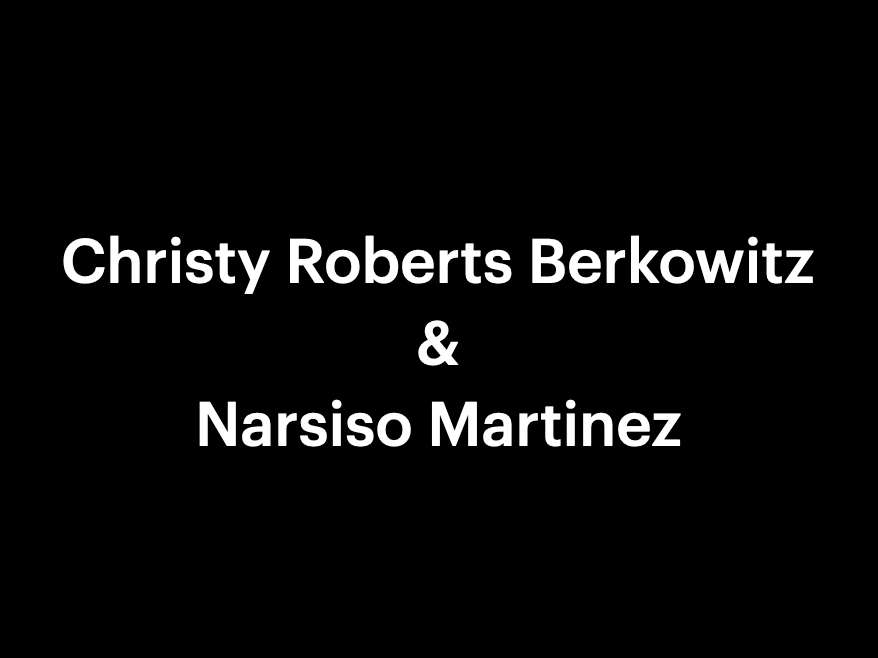Biography
The grandchild of an explorer, McLean Fahnestock seeks out footage, images, and items that expand our understanding of place, real and unreal, and question how desire shapes the landscape. McLean received a BFA from Middle Tennessee State University and MFA from California State University Long Beach. Her work has been exhibited and screened across the United States and Internationally at institutions such as the Aurora Picture Show and Menil Collection, Houston, Frist Art Museum, Nashville, Black Mountain College Re{Happening}, North Carolina, Technisches Museum Wien, Vienna, Austria, The California Science Museum, Los Angeles, The British Library, London, and MOCA Hiroshima, Japan. Her work was selected for Off the Screen at the 57th Ann Arbor Film Festival. McLean keeps her studio in Old Hickory, TN.
Artist Statement
I work with desire in the landscape and its consequences. Place is one of the factors that defines our identity. Where we are, where we are from, have been and want to go all contribute to our understanding and communication of ourselves. The landscape that we identify with may differ greatly from the one that we idealize. I am interested in that gap and other gaps that widen in our perception of and desire for place. A landscape can expose privilege and vulnerability. Places of breathtaking perfection that are called Paradise, Eden, Elysium, and Promised Land are places of desire and escape. They give power to those who explore and hold them. In my projects I center the landscape in reference to the Western concept of Paradise and the subsequent values that have grown around it have branched into colonialism, development, gentrification, ecological damage, and climate change.
My practice is primarily in video and other forms of new and digital media. Most often engaging in appropriation and collage strategies integrating forms of digital capture and creation with physical layers and containers from craft and sculpture traditions. The project’s final presentations range from large scale mapped projections to mixed digital fabrications and XR.
BEAUTIFULLY AWFUL SCENES
These three videos, and the fourth background video, are all digital video and stop-motion created with biodegradable glitter. Inspired by global climate change, the development of highly desired real estate in ecologically sensitive areas, and the beauty that accompanies scenes of the destructive power of nature on edge.
Installation documentation from Channel to Channel exhibition. Contact the gallery for accession information.
Catalyst:
How do you decide what your work is about, and how do you decide on what signifiers to use to convey the narrative? For instance, there is much symbolism through BEAUTIFULLY AWFUL SCENES. Can you talk about how you decided on what noises to play for the soundtrack? For Gold Rush, it sounds like a slot machine and a hand going in to collect the change from a metal container. For Fistfuls of Diamonds, it sounds like cellophane being crinkled by hand, and for A Long Season, it sounds like ice being scooped out of an ice machine and someone eating it simultaneously. Although, it could also be someone walking in and shoveling snow. (I mean, that's what it sounds like to me. ) How do these sounds inform your work?
McLean Fahnestock:
Generally, I start out with an image, object, or video that I have collected that holds resonance and an opening for metaphor and content. These kernels of works can live in my sketchbook, on my wall, or on my desktop for years before they enter a project stage. I look for things that tap into my interests in the landscape and the ways the humans exert their control and desires upon the land. In the project Beautifully Awful Scenes, I was thinking about the cost of tourism and development in areas that are prone to fire (two of the works refer to California - Gold Rush, and Fistfuls of Diamonds and the other, A Long Season, depicts the Smoky Mountains that stretch through East Tennessee and North Carolina) as well as how California is a constructed landscape, made to emulate paradise at the detriment of the ecosystem. The sounds for each work are chosen to add depth in content. Gold Rush is coins falling into a metal dish, meant to sound like money from the slots. Fistfuls of Diamonds is the sound of gems being poured onto velvet. I used bags of faceted cut glass and small craft stones to create the sound. The sound the A Long Season is the sound of raking leaves. It is a bit of Trump joke. The former President had said that we could prevent forest fires by raking up the leaves in the national forests.
Catalyst:
Can you talk about using a mixed-media-like approach when presenting your work? It seems to go beyond just an installation type of representation mainly because of all the different mediums you use to inform the audience. Do different mediums solicit different reactions or give viewers options for finding meaning in the work?
McLean Fahnestock:
My mixed-media approach comes from my backgrounds in Sculpture and retail merchandising. I don't come to video from a lens-based practice like photography and so my first impulse is not always to capture on film or video. Instead, I think about how a work needs to live in the world, the material presence, if the experience needs to be personal or communal, and the scale of an image. I work to find forms for presentation that add the meaning in the same way that I find images, footage, and objects for the content of the work. Scavenging (appropriating, collaging) is a bit part of my practice. So is editing. And to get to your final question, yes, different mediums do make a difference in how people approach and engage with the work and some works need more immersion or the activation of multiple senses or perception of time. Time based works can charge emotions but things can be missed in the montage. Sometimes, a work needs stillness for contemplation and understanding.
Catalyst:
How does using video hinder or help you manipulate how viewers perceive your concepts?
McLean Fahnestock:
So this is kind of a continuation of the end of the last answer. Sometimes video is wrong for the message, for the content. A few years ago, video was, perhaps, a harder sell for audiences because it was novel. Now video is ubiquitous thanks to social media platforms and their promotion of the medium. Slower, longer form, and more experimental videos are still challenging but they should be. Art should challenge. But it has helped that video is more common in people's lives and they are more apt to accept it as an art form.
I started using video because I could edit and highlight the tension and precariousness of interpersonal communication that I was very interested in at that time. As my practice has shifted, my use of video has shifted but I still highly edit it to shift perception and pull out the moments, in isolation many times, that I want the audience to focus on.
Catalyst:
What kind of role do you see colonialism playing in climate change, and how we see the environment in general? How does that history affect our current behaviors and relationships to the environment?
McLean Fahnestock:
I see a direct link between colonialism and our current climate change predicament. Colonial attitudes toward the lands that were conquered and settled have been perpetuated in the contemporary era. We were not taught to be stewards or protectors of the land but that the resources are there for us to use and shape to our will. Especially as Americans, where we have a history of regarding the land as something to be subjugated and that act of domination of the natural environment is our right (think manifest destiny). Moving ever forward, progress at any cost, from the industrial revolution, to the manipulation of watersheds, and the development of factory farming, has gotten us to the place where we have done what could be irreparable damage. In my work I want to point at these detrimental ways of thinking. I focus a lot on desire and how that transfers into actions. The want for paradise, for idealized landscapes, is an interesting place to start psychologically, especially when considered with American exceptionalism as an underlying drive. What has been done to the environment in the name of building something more desirable?
Out of Range
Archival pigment print and toner transfer
21.25 x 14.16"
2020
Catalyst:
The way you've framed the idea of security seems to exist like a magic trick or an illusion creating a false sense of security or something easily broken. Is that why you chose the envelope patterns to represent security and embedded them in a fleeting element, mist, which is only visible under the exacting circumstances?
No Admittance
Archival pigment print with toner transfer
9 x 15"
2020
McLean Fahnestock:
The false sense of security was on my mind when making these works. Also how arbitrary and shifting people can be with their boundaries - protecting the wrong things. I use landscape as a vehicle for metaphor quite a bit. What is hiding in the fog that needs to be protected? I was inspired by the invisible walls that you run into when playing video games that are designed around open worlds. There are areas where you can see beyond where you can run but you can't continue. Either the hill is too steep or a grid will pop up to let you know that you have reached the end of the map. I was also inspired by driving through the morning fog on my commutes. The wall of mist continues to move ahead of me and I never reach the boundary line. These are competing concepts which I love. In one, you don't see the wall until you hit it and in the other you see the wall and never get there. These works have that same repetition. There is a static wall, in the patterned drape that hangs between the video screen and the wall, and the moving wall in the animation of the patterns is in the video itself, on the mist in the landscape. The envelope patterns represent security but also a bit outdated and questionably effective.
Submerged Objects
Archival pigment print and toner transfer
10 x 15"
2020
Catalyst:
In the Isolated Landscapes project statement, you mention a "surge of energy" What are you referring to? Is it something activated by the landscape itself, or do explorers and intruders trigger it?
McLean Fahnestock:
Isolated Landscapes are partner works to the Secured World Views works. The surge of energy is like the wall revealed by the player in a video game when they hit an unseen barrier. Moving forward and then suddenly finding your way forward blocked. These works are truly showing the places at the end of the map.
Catalyst:
It seems like there is a subtext that is hinting at classism in your work, especially when talking about the limitations of a person being able to explore a landscape. It would appear that with the right resources and funding, no such limitations would exist. I think this is hinted at in your artist statement when you talk about gentrification, even though that term isn't usually associated with how we transform the once-natural world but rather how we reestablish the hierarchy of wealth in already developed locations. But when a person privileged with wealth experiences no boundaries and limitations on where they move, what they can own, and what they can destroy for financial gain, it also seems relative to your work. Is that something you're covering, and is it an important aspect?
McLean Fahnestock:
Classism and the availability of mobility and escape from the effects of climate change and other disasters is something that I am considering and highlighting in my works. There is a piece called Own Your Own Future that I created a few years ago using a generative adversarial network (artificial intelligence). I fed the system 500 images of private islands and asked it to create new islands. I selected over 1000 new islands from those I was thinking about the agency that those with means have to remove themselves from the dangers of sea level rise, loss of resources, global unrest, and pandemics because of their ownership and access to private islands. I used AI to create more islands so that people could claim these newly generated spaces for themselves. Inspired by the rise in popularity of the Animal Crossing during the early lock down of Covid-19, I was thinking about ownership and care of imagined spaces versus real land conservation and ecological consideration. How do we transfer that interest to real action?
While we think of gentrification as affecting people and not the environment, construction and development does not necessarily mean ecologically sound practices and benefits. Construction run-off, wastewater management, and removal of green-spaces, for example. So yes, classism is an imbedded consideration in my work. In the discussion of barriers and of the destruction proffered by those who seek profits.
Own Your Own Future
(AI)
2 individual images plus
matrix image
Catalyst:
How do you think depictions of nature in digital space transforms our perspective of nature and discovery? Do you think it encourages more exploration or helps keep us settled?
McLean Fahnestock:
This is a question to pause and reflect on. I find depictions of nature in digital space, even those that are captured through lenses, to be removed and sanitized. I have been working in 360 VR recently and while you are surrounded by the video, the place, it is clean and you are made passive. In my work sometimes I play off of that intentionally, working with highly edited commercialized images like tourist advertising materials, but in other works where I have gone out into the field to capture the footage myself, that distance remains between the digital and the real. I think that it creates a space for narrative and immersion but in the end can keep us settled. When someone else has gone, and brought back the package, why do we need to go? Years ago I made a video, In the Offing, about the desire to sail to the South Pacific constructed using films about the South Pacific from the beginning of cinema to the 1960s. I was wondering about the effect of popular films about the area on my Grandfather's decision to make the journey by sailboat from NY to Polynesia. Without him being around to ask, I looked elsewhere for influences. He sailed in the late 1930s and early 40s but I extended my exploration to the 60s to cover his lifetime. Anyway, I think that there is something in cinema that stirs passion and imagination. In the moment, I am going to call that thing withholding. There is narrative and cinematography but there are spaces in the edit, in between the frames, where we can insert ourselves. Perhaps the new digital spaces, in their quest to become so immersive have lost that mysterious space where we are not passive observers along for a ride but active observers puzzling out relationship to the place we find ourselves occupying.
Catalyst:
How do you think Ai affects our perception of digital representations of nature and representation in general? Is it something you've considered using in your work since you already rely heavily on appropriated imagery?
McLean Fahnestock:
I mentioned my AI project a bit above. I really wanted to use AI in that instance to create as nature has created, raising islands from the sea. AI is an amazing tool for artists to use to make new combinations of landscapes and nature that they may not have previously considered but it is above all things a tool. You must know how to interact with it and guide it to get the most out of it or it will spit out generic binary dreams. That may be what you want but you have to be the director. How it affects our perception can depend on which model you are using, is it reflecting a style you specify or working from averaging what it finds in its image set. I find the averaging is interesting because there is so much variety (and ugliness) in the reality of nature and the landscape and the computer is reacting to our preferences, our desires in an image of nature and giving us that. It would be my hope that the AI depictions will lead to a circling back to an observation of the real and comparison of the randomness and unplanned consequences that are found there versus what is generated digitally. They both have value and offer narrative and content for artists and audiences alike.
Catalyst:
Thank you for checking out this interview. If you would like to see more of McLean Fahnestock, please check out her website https://mcleanfahnestock.com/ & her Instagram feed @mcfahnestock



